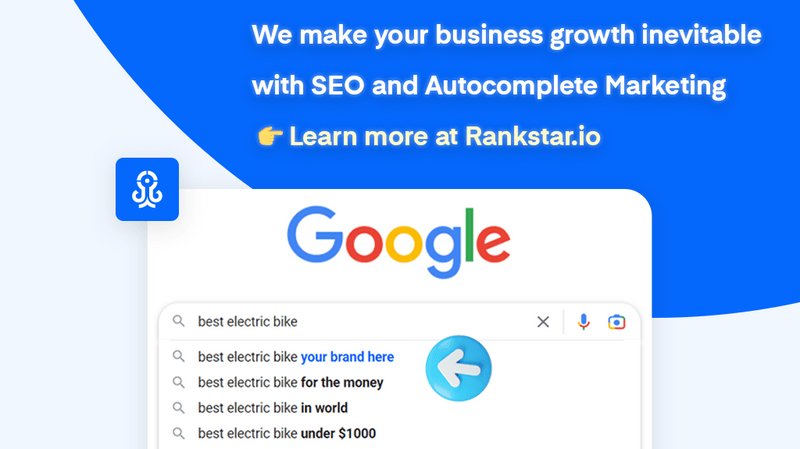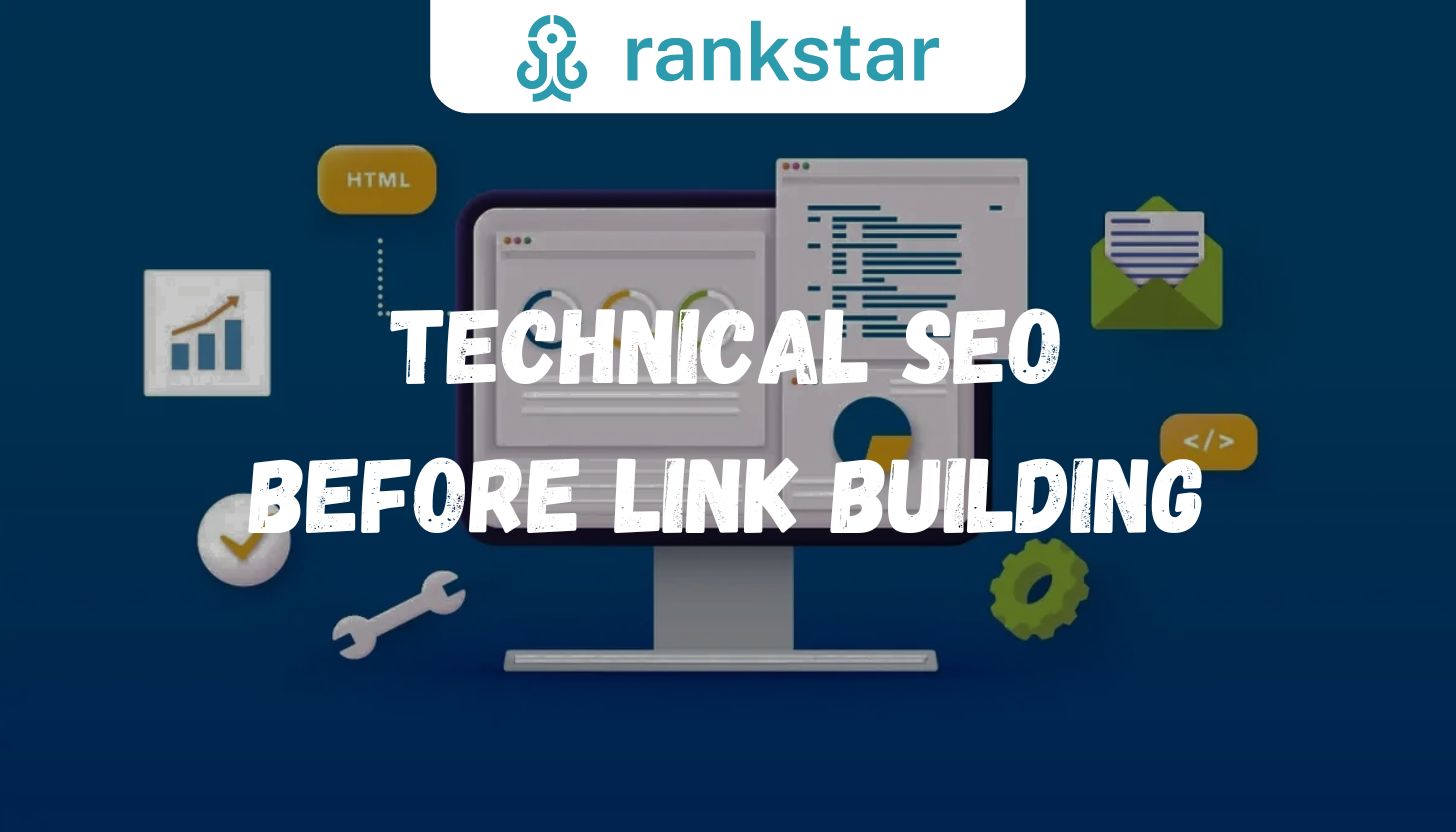Isn’t it curious how you’ve been focusing on link building, yet it feels like you’re running in place with your SEO efforts? It’s time to shift gears and concentrate on mastering technical SEO first. Consider this guide your roadmap to optimizing your website’s infrastructure, ensuring it’s fully prepared for the journey ahead.
You’ll discover the critical yet often overlooked elements that could be holding your site back from achieving its full potential in search engine rankings. So, why keep spinning your wheels with link building when a more robust foundation in technical SEO could propel you forward?
Let’s explore how to lay down the groundwork that’ll make your link-building efforts far more effective and enduring.
Key Takeaways
- Conduct a technical SEO audit using tools like Screaming Frog to identify and fix crawl issues before link building.
- Optimize site performance by improving page load speed and fixing poorly coded designs for better rankings.
- Ensure all HTTP content is properly redirected to HTTPS to avoid duplicate content and secure user data.
- Clean up site structure and URLs for a more efficient crawl and user experience, laying a solid foundation for link building.
Elevate Your Rankings with RankStar’s Premium Link Building Services!
Ready to boost your website’s visibility and dominate the search results? Look no further than RankStar’s top-tier Link Building Services! Our team of seasoned professionals is dedicated to crafting high-quality backlinks that drive organic traffic and skyrocket your rankings.
Don’t settle for mediocre results – trust RankStar to deliver the backlinks your website needs to thrive in today’s competitive landscape. Whether you’re looking to climb the ranks on Google, Bing, or both, our comprehensive approach to link building will ensure your success.
Take control of your SEO strategy and unlock your website’s full potential. Contact RankStar today to learn more about our Link Building Services and start your journey towards search engine supremacy!

Understanding Technical SEO Fundamentals
Before diving into the complexities of link building, it’s crucial you grasp the fundamentals of technical SEO. Understanding this groundwork ensures your site’s not just a beautiful facade but a well-oiled machine under the hood, fully comprehensible and navigable by search engines.
Technical SEO, at its core, involves fine-tuning your website so search engines can crawl and index it without hitches. You’ve got to ensure your site’s architecture is as clear as day to Google’s bots. This means fixing any 404 errors by redirecting old URLs to new ones, ensuring your site is secure with proper HTTPS implementation, and avoiding the peril of duplicate content by redirecting HTTP content to HTTPS.
Moreover, you can’t overlook the importance of a straightforward URL structure. It’s not just about aesthetics; it’s about making it easier for search engines to understand and rank your content. Avoid dynamic parameters and unnecessary complexity in your URLs. If you’re using WordPress, leverage plugins to manage redirects efficiently, but remember, moderation is key. Too much of anything, including redirects or plugins, can bog down your site, moving you further away from the goal of a seamless, technically sound website.
Website Speed and Performance Optimization
Optimizing your website’s speed and performance is crucial for keeping visitors engaged and improving your site’s search engine ranking. Slow-loading pages can frustrate users, increasing the likelihood they’ll bounce off your site and negatively impact your SEO efforts. Let’s dive into how you can enhance your site’s speed and keep your audience satisfied.
First off, evaluate your site’s current performance with tools like GTMetrix or Google’s PageSpeed Insights. These tools provide invaluable insights into what’s slowing down your site and offer actionable recommendations for improvement. You’ll likely find that large, unoptimized images are a common culprit. Compressing and resizing images can significantly reduce their load time without compromising quality.
Next, minimize the use of heavy plugins. While plugins add functionality, they can also bog down your site’s performance. Audit your plugins and remove any that are unnecessary or find lighter alternatives that offer the same functionality.
Lastly, leverage browser caching. This allows return visitors to load your site faster since their browser can store parts of your site for future visits. Implementing these steps won’t only boost your site’s speed but also enhance overall user experience, setting a solid foundation for your SEO strategy.
Mobile-Friendliness and Responsive Design
Ensuring your website is mobile-friendly and utilizes responsive design is crucial for engaging a vast audience and boosting your SEO ranking. In today’s digital world, most people use their smartphones to browse the internet. If your site doesn’t look good or function well on a small screen, you’re likely to lose visitors and potential conversions. It’s not just about aesthetics; Google prioritizes mobile-friendly websites in its search results.
To start, test your website’s mobile responsiveness using tools like Google’s Mobile-Friendly Test. It’ll highlight issues like text that’s too small to read, the use of incompatible plugins, and content wider than the screen. Addressing these issues is your first step towards a better ranking and user experience.
Implementing responsive design means your site’s layout adjusts seamlessly to fit the screen size of the device it’s being viewed on. This adaptability improves usability and satisfaction for your visitors, regardless of how they access your site. Remember, a happy visitor is more likely to become a returning visitor or a customer. So, don’t skimp on making your website accessible and enjoyable for everyone.
Site Structure and URL Optimization
After mastering mobile-friendliness and responsive design, it’s crucial to focus on refining your site’s structure and URL optimization for peak SEO performance. A well-organized site structure not only helps search engines crawl and index your content more effectively but also enhances the user experience, making it easier for visitors to navigate your site and find the information they’re looking for.
To optimize your site structure and URLs, consider these key points:
- Simplify Your Site Structure: Aim for a hierarchy that’s logical and straightforward. Each page should be accessible within a few clicks from the homepage. This simplicity aids both users and search engine bots in navigating your site.
- Consistent URL Structure: Ensure your URLs are clean, consistent, and descriptive. Avoid long URLs filled with unnecessary parameters. Short, keyword-rich URLs are preferable as they’re easier to read and can contribute to better rankings.
- Utilize Breadcrumbs: Breadcrumbs enhance navigation and help search engines understand the relationship between pages and their place in the site hierarchy.
- Avoid Duplicate Content: Ensure each URL presents unique content. Use canonical tags to prevent duplicate content issues, which can dilute your SEO efforts.
Implementing these strategies will set a solid foundation for your SEO success, paving the way for more advanced optimizations.
Technical On-Page SEO Factors
Diving into technical on-page SEO factors, it’s crucial you understand the significance of optimizing elements directly on your website to boost its search engine ranking. These factors play a pivotal role in making your site more accessible and comprehensible to search engines, which in turn, can significantly elevate your online visibility.
To give you a clearer picture, let’s break down some of the key on-page elements you should be focusing on:
| Element | Importance | Tips for Optimization |
|---|---|---|
| Meta Tags | Critical for search engines to understand the content of your page. | Use unique titles and descriptions. |
| Header Tags (H1, H2, etc.) | Help structure your content for better readability and SEO value. | Use them to structure content logically. |
| Image Optimization | Speeds up page loading time and enhances user experience. | Compress images and use descriptive ALT tags. |
Website Security and HTTPS Implementation
Understanding the optimization of on-page elements sets the stage for the crucial next step: securing your website through HTTPS implementation. HTTPS, or Hyper Text Transfer Protocol Secure, isn’t just a preference but a necessity in today’s digital landscape. It encrypts data between your website and its visitors, safeguarding information from malicious attacks and building trust with your audience.
Here are key steps to ensure your website’s security through HTTPS:
- Purchase and Install an SSL Certificate: Start by acquiring an SSL (Secure Sockets Layer) certificate from a reliable certificate authority. This is the backbone of HTTPS, encrypting the data exchanged between a browser and a server.
- Update Your Website to Use HTTPS: After installing your SSL certificate, update your site to use HTTPS by default. This involves changing your website’s settings and ensuring all internal links point to the HTTPS version.
- Redirect All HTTP Traffic to HTTPS: Use server-side redirects (301 redirects) to automatically send visitors from your old HTTP pages to the secure HTTPS ones. This prevents security warnings and ensures a seamless user experience.
- Update External Links and Sitemaps: Don’t forget to update any external links pointing to your site and your sitemap to reflect the HTTPS URLs. This aids in maintaining your SEO rankings and ensures search engines are indexing your secure site correctly.
Technical SEO Audits and Monitoring
Why should you regularly conduct technical SEO audits and monitor your website’s performance? It’s simple. The digital landscape is always changing, and your website must keep up. Regular audits ensure your site is optimized for search engine crawlers and user experience. Monitoring performance lets you catch and rectify issues before they impact your rankings.
Here’s a quick guide to what you should focus on during your audits:
| Aspect | Tool Suggestion | Purpose |
|---|---|---|
| Site Crawling | Screaming Frog | Identify crawl errors and redirects |
| HTTPS Implementation | Google Search Console | Ensure secure connection and prevent mixed content issues |
| Page Load Speed | GTMetrix | Optimize for better user experience and rankings |
| Mobile Usability | Google Mobile-Friendly Test | Confirm your site is optimized for mobile devices |
Auditing and monitoring are not one-time tasks. They’re ongoing processes that keep your site healthy and competitive. By staying proactive, you’ll not only maintain but also improve your site’s performance and rankings. Remember, before you dive into link building, getting your technical SEO foundation solid is critical. So, roll up your sleeves, and let’s get your website in tip-top shape!
Addressing Common Technical SEO Challenges
After ensuring your website’s technical foundations are solid through regular audits and monitoring, it’s crucial to tackle the common technical SEO challenges that can still arise. These issues, if not addressed, can hinder your website’s performance and its ability to rank well on search engines.
Here’s how you can overcome them:
- Fix HTTPS Implementation Issues: Ensure your website is fully secure by correcting any improper HTTPS implementations. This means setting up proper redirects from HTTP to HTTPS to avoid duplicate content and ensuring there are no mixed-content issues.
- Optimize Site Speed: A slow-loading website can drastically affect user experience and SEO rankings. Compress images, minify CSS and JavaScript files, and leverage browser caching to improve loading times.
- Eliminate Redirect Chains: Too many consecutive redirects can slow down site performance. Identify and remove unnecessary redirect chains, replacing them with direct links to the intended destination.
- Address 404 Errors: Broken links aren’t just a nuisance for users; they also waste crawl budget. Use tools to identify 404 errors and redirect old URLs to relevant new pages to maintain link equity and improve site navigation.
Frequently Asked Questions
How Does User Engagement and Behavior on My Site Impact Technical SEO, and What Tools Can I Use to Measure This?
User engagement and behavior on your site significantly impact technical SEO by influencing site performance and rankings. Use tools like Google Analytics and Google Search Console to measure and analyze this impact effectively.
Can Implementing Structured Data Directly Influence My Site’s Performance in Technical SEO, and How Should I Prioritize It?
Yes, implementing structured data can directly boost your site’s technical SEO by making it easier for search engines to understand your content. You should prioritize it highly to improve visibility and search rankings.
How Do Updates to Search Engine Algorithms Affect My Technical SEO Efforts, and What Steps Should I Take to Stay Updated?
Search engine algorithm updates can impact your technical SEO efforts significantly. You should regularly follow SEO news, use tools like Google Search Console for insights, and adjust your strategy to stay ahead.
In What Ways Can Server Location and Hosting Choices Impact the Technical SEO of My Website, and How Can I Optimize for These Factors?
Your server location and hosting choices can significantly affect your website’s technical SEO by influencing page load times and user experience. Optimize by selecting a server close to your target audience and choosing reliable hosting.
How Do Voice Search and Emerging Technologies Like AI Influence Technical SEO Strategies, and What Adjustments Are Necessary to RemAIn Competitive?
To stay competitive with voice search and AI, you’ll need to focus on natural language and question-based content. Ensure your site’s structured data is in place to help search engines understand your content better.
Conclusion
Now you’ve got the scoop on mastering technical SEO before hitting the gas on link building. Remember, ensuring your site’s engine—its technical foundation—is primed, is crucial.
From boosting site speed to securing with HTTPS, these steps are your ticket to the top of search engine rankings. Keep auditing, tweaking, and optimizing. Your well-oiled machine is now built for digital success.
So, gear up, monitor your progress, and watch your site race ahead in the SEO marathon.


















